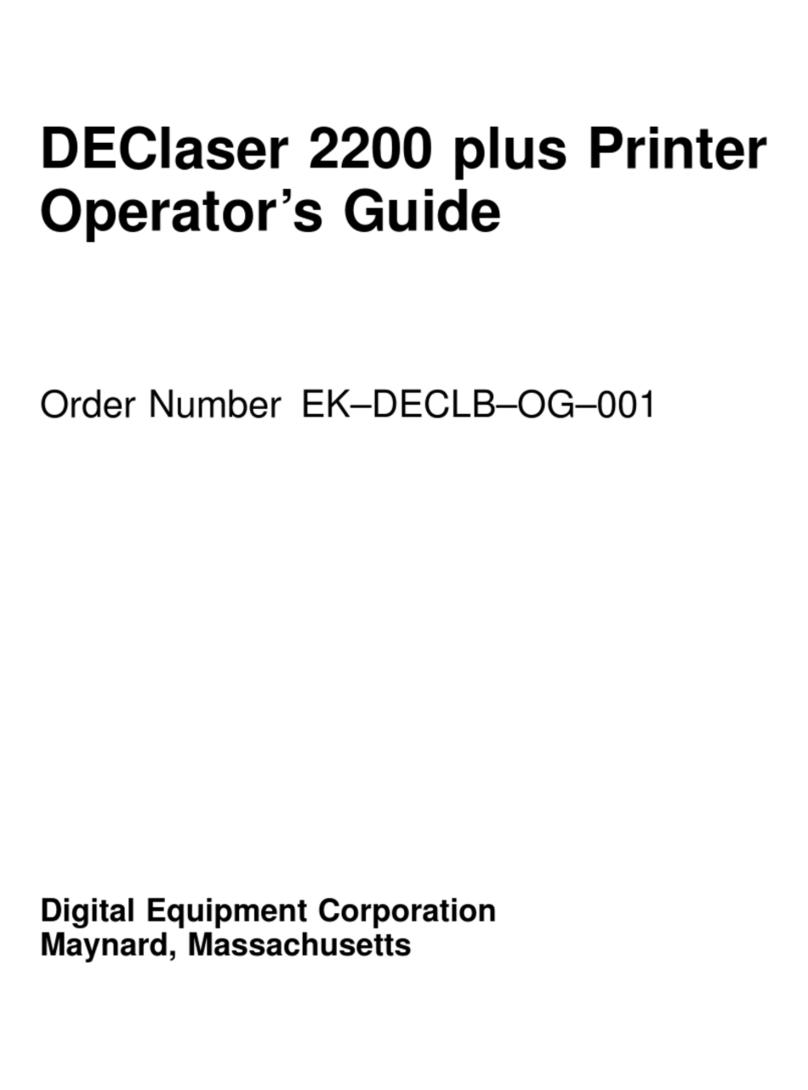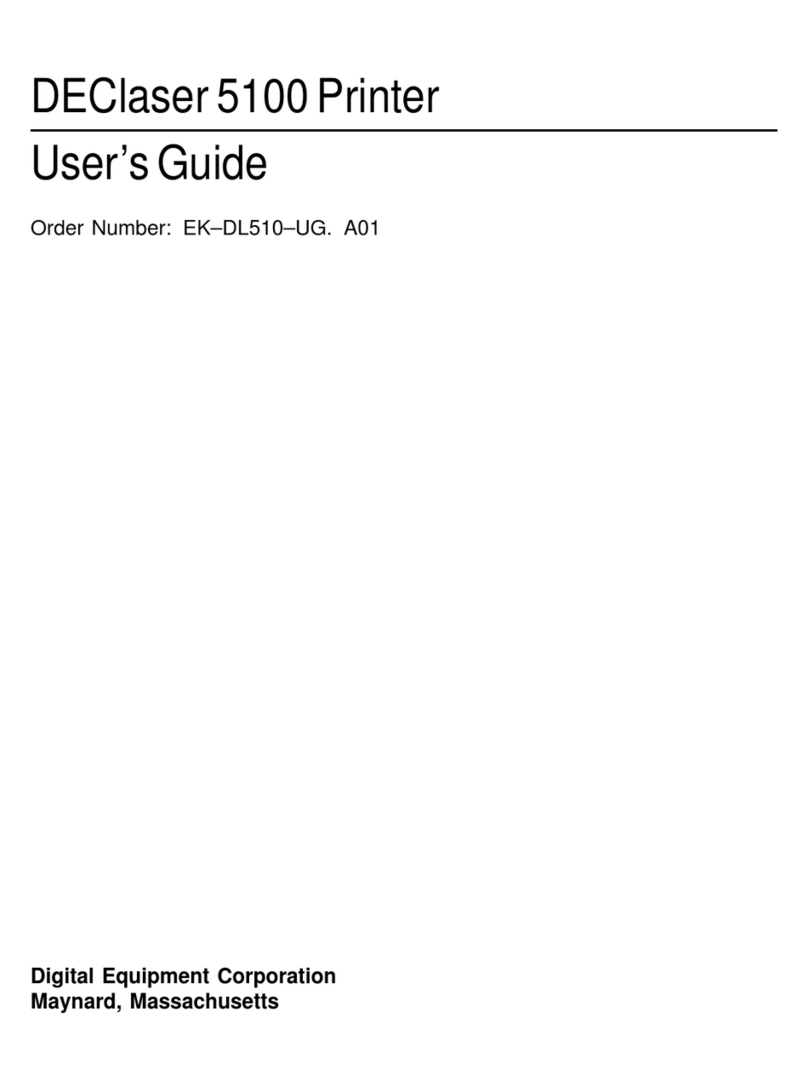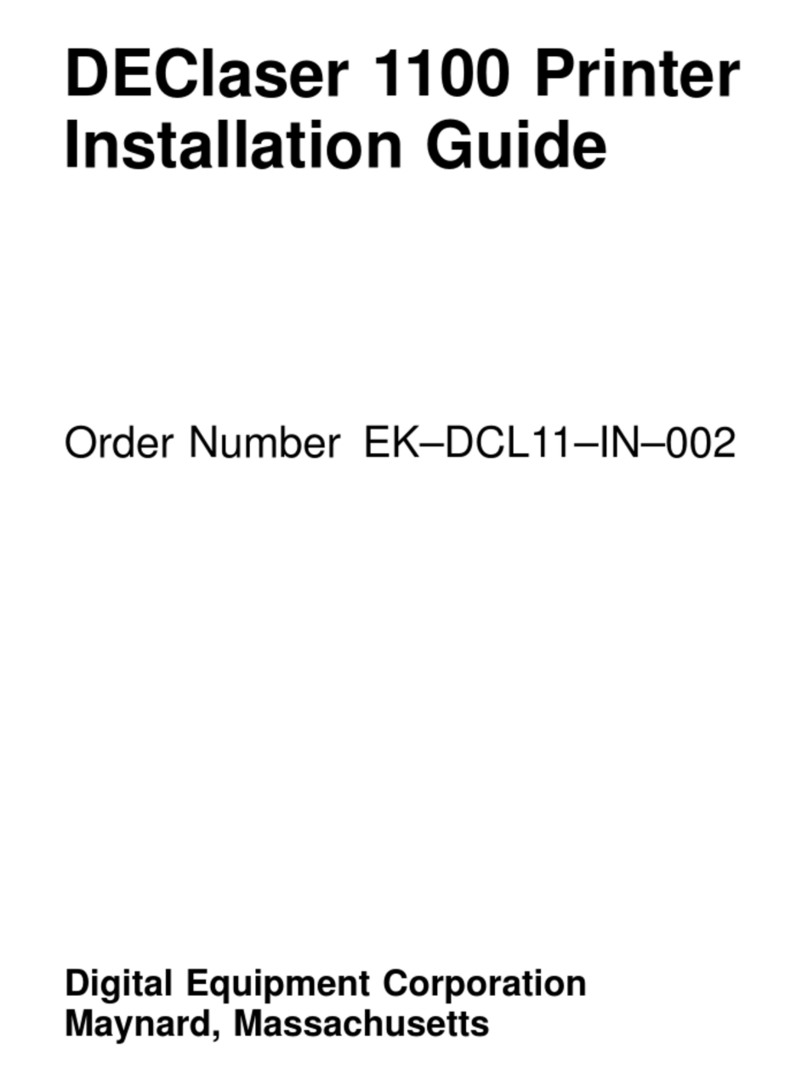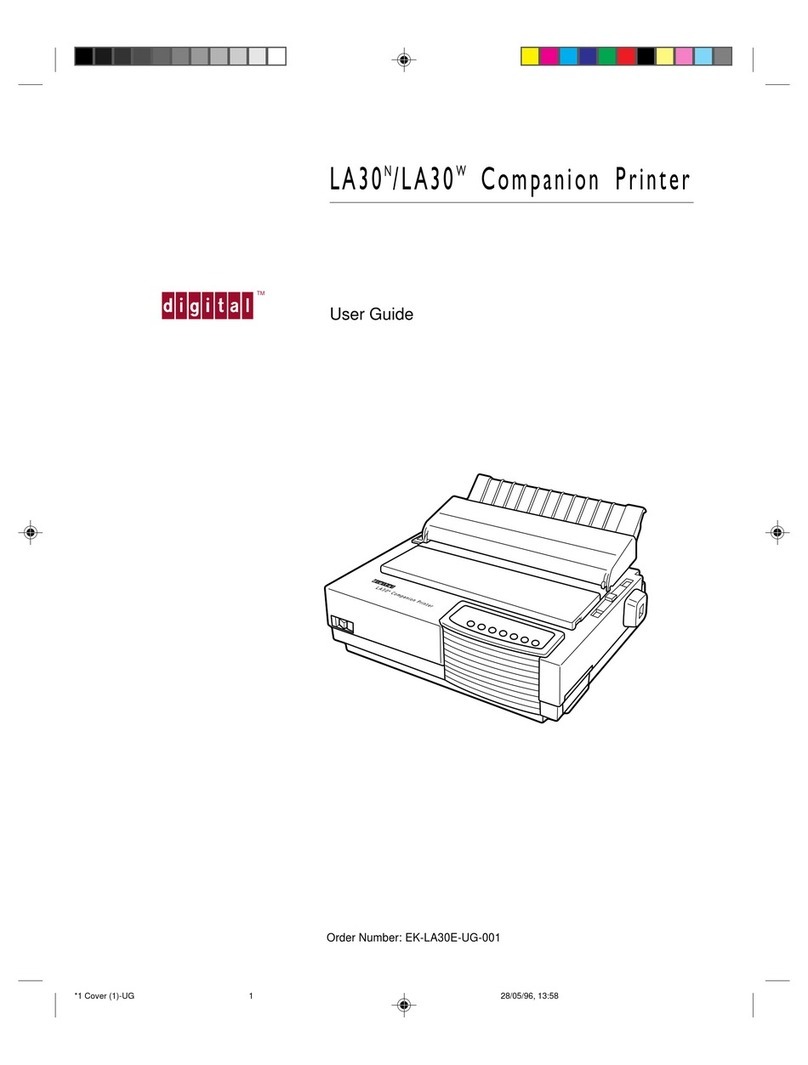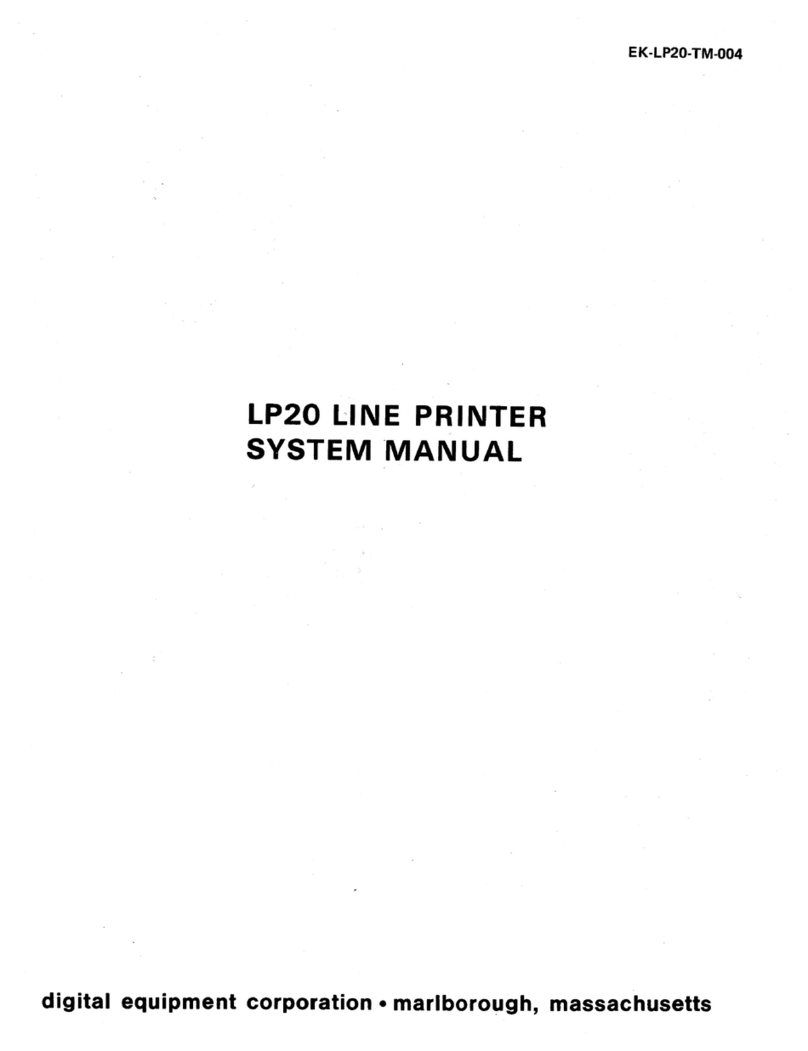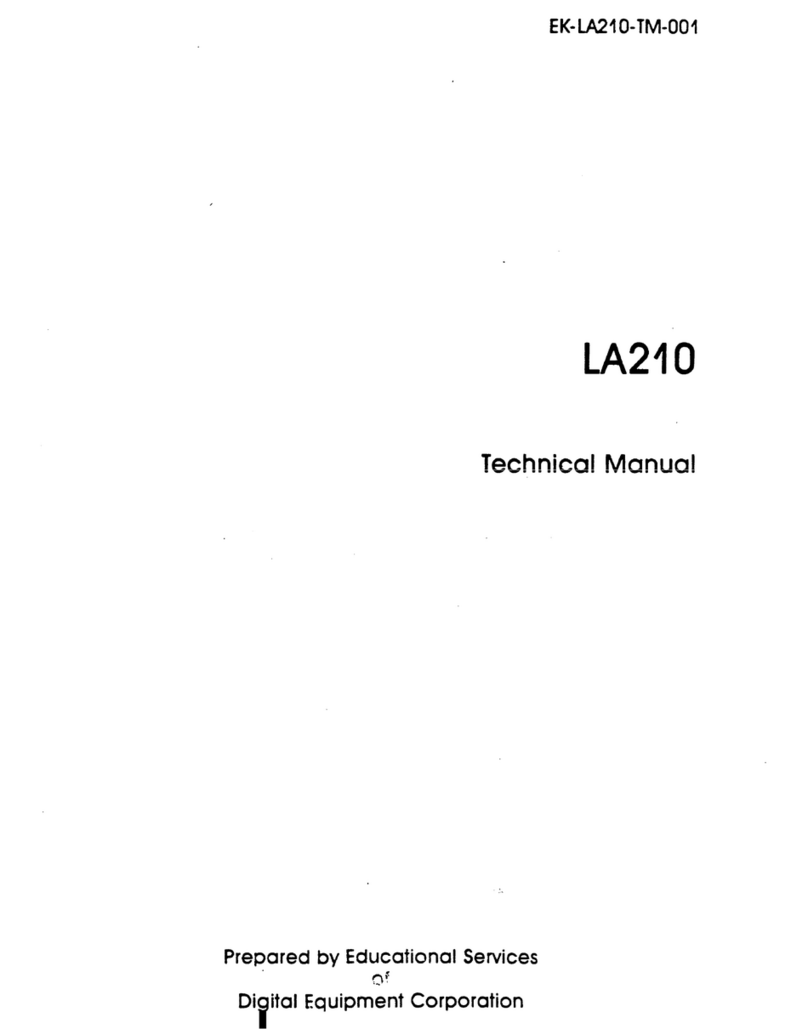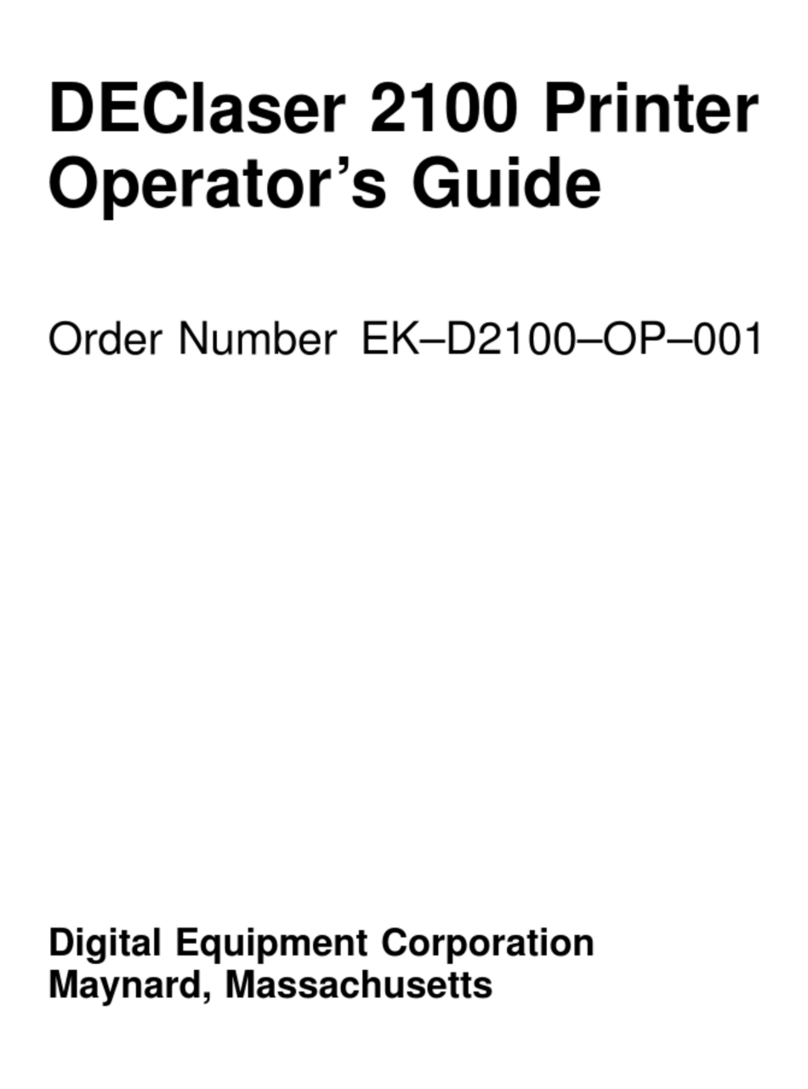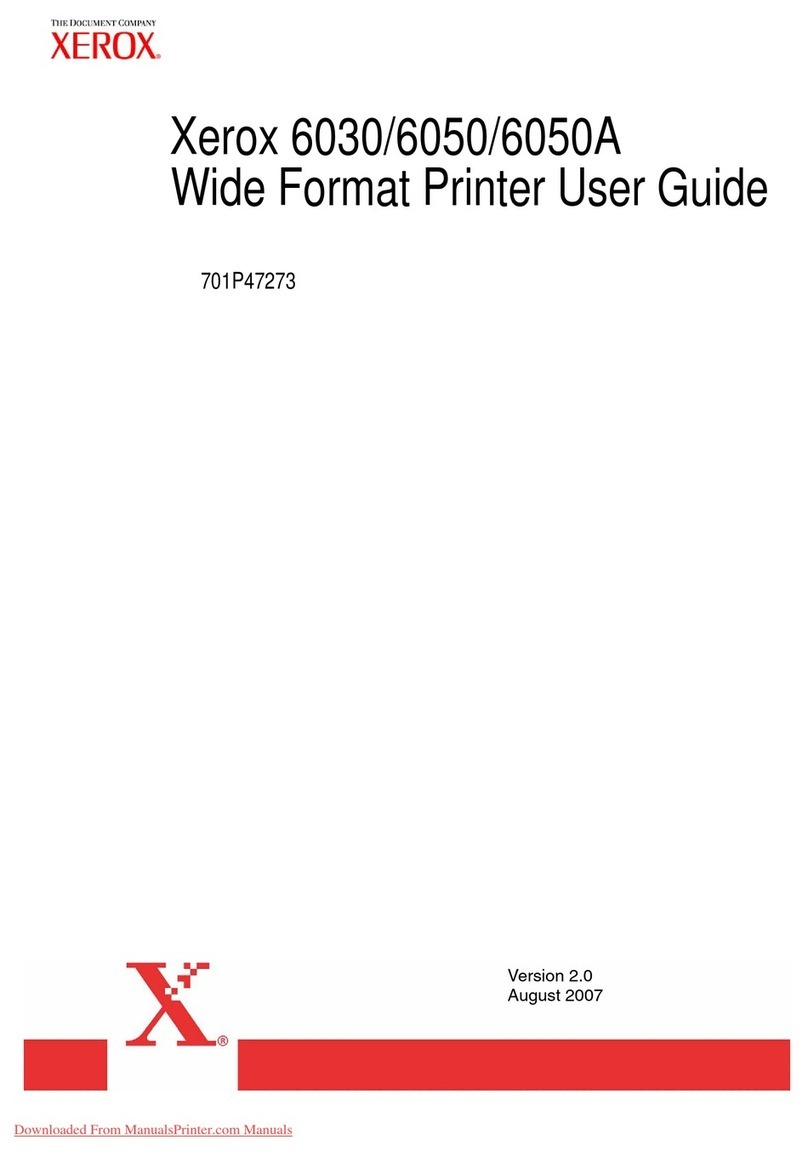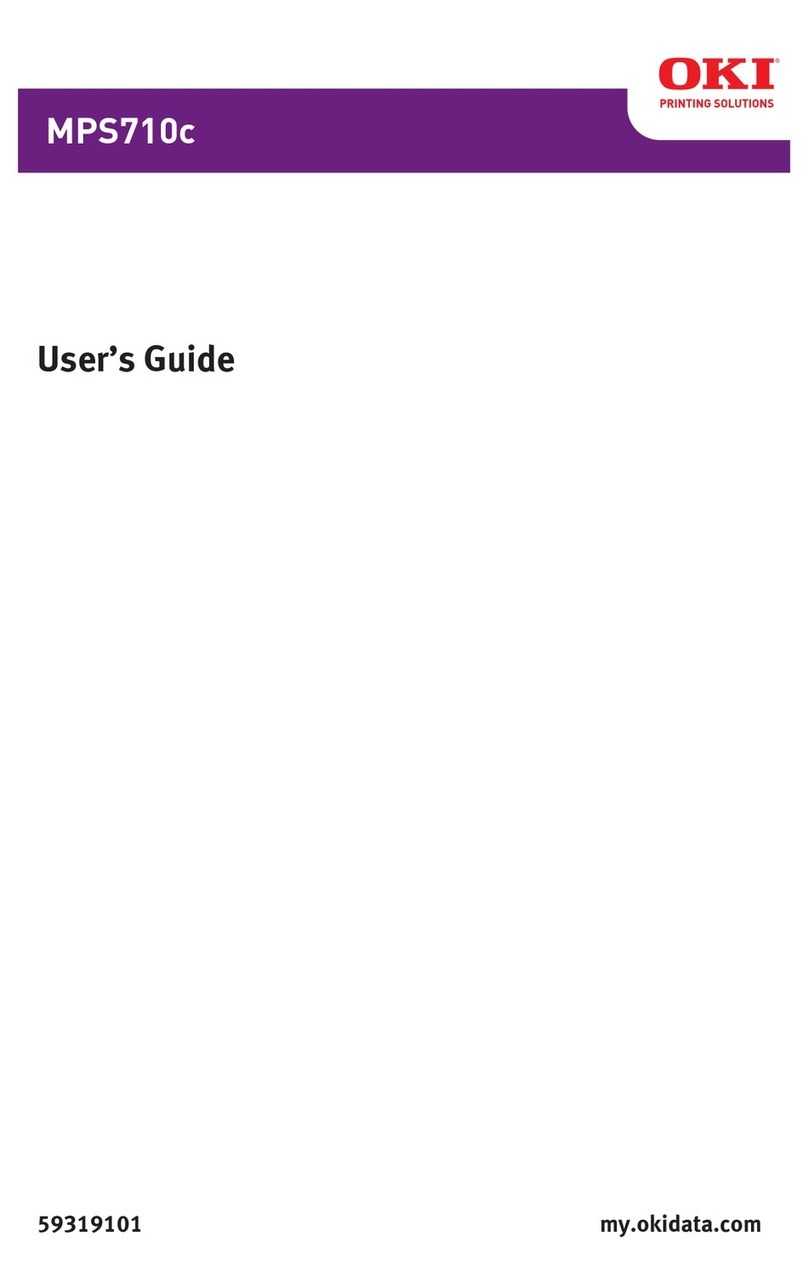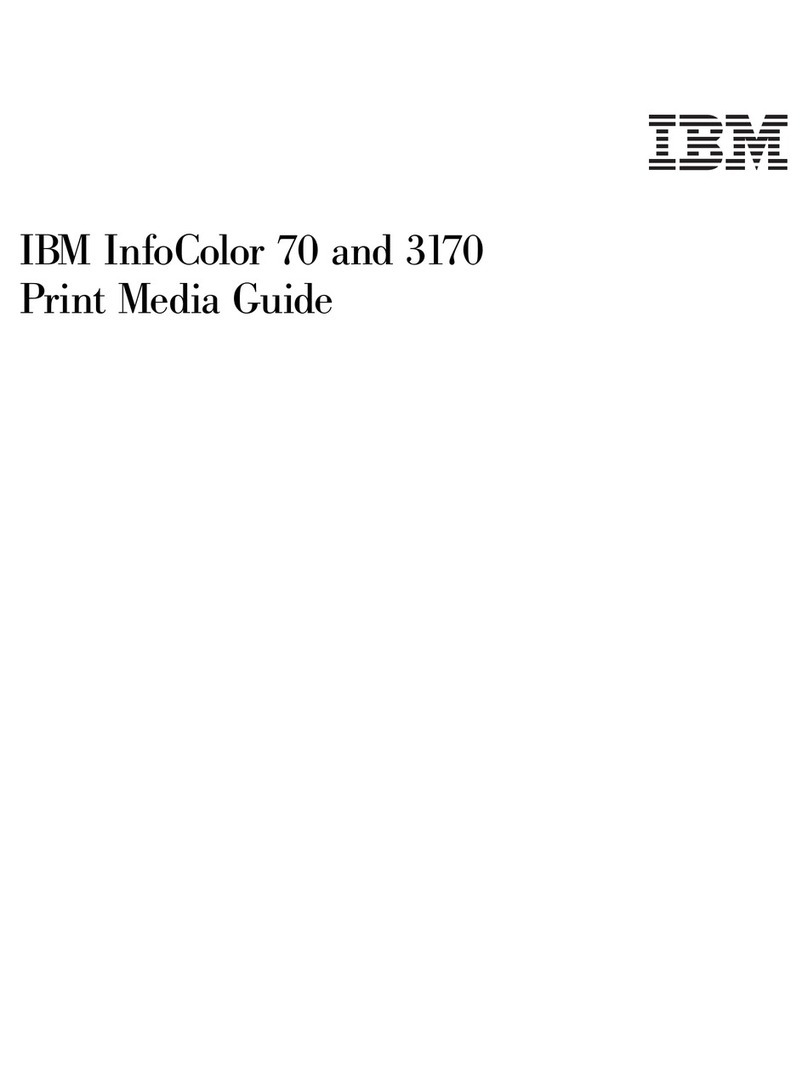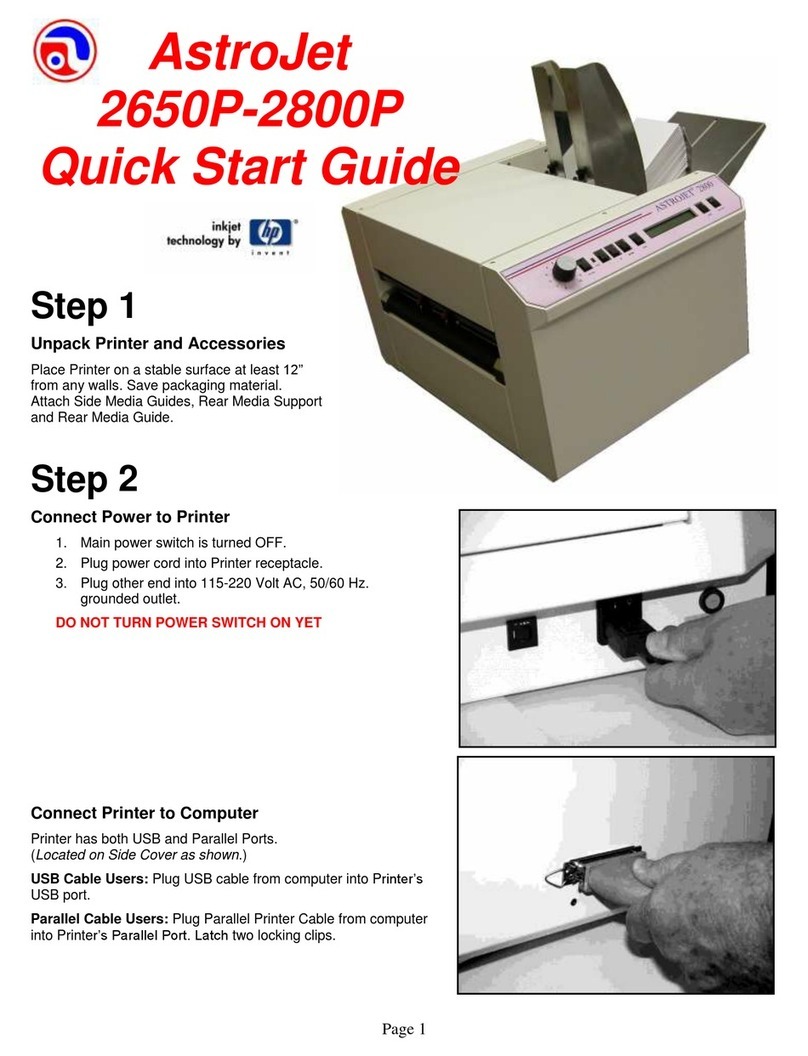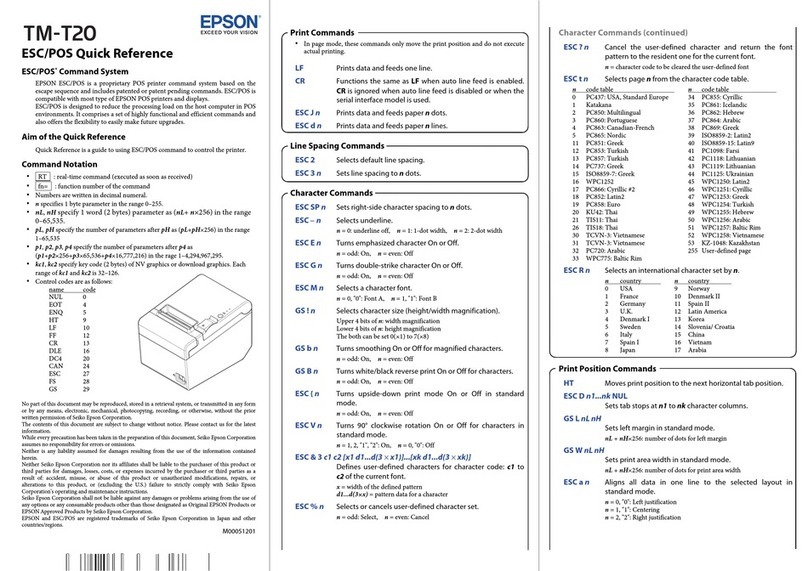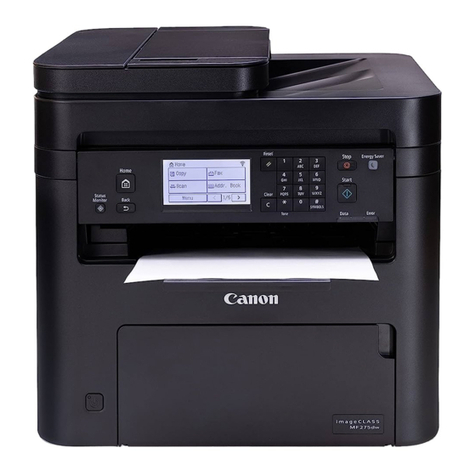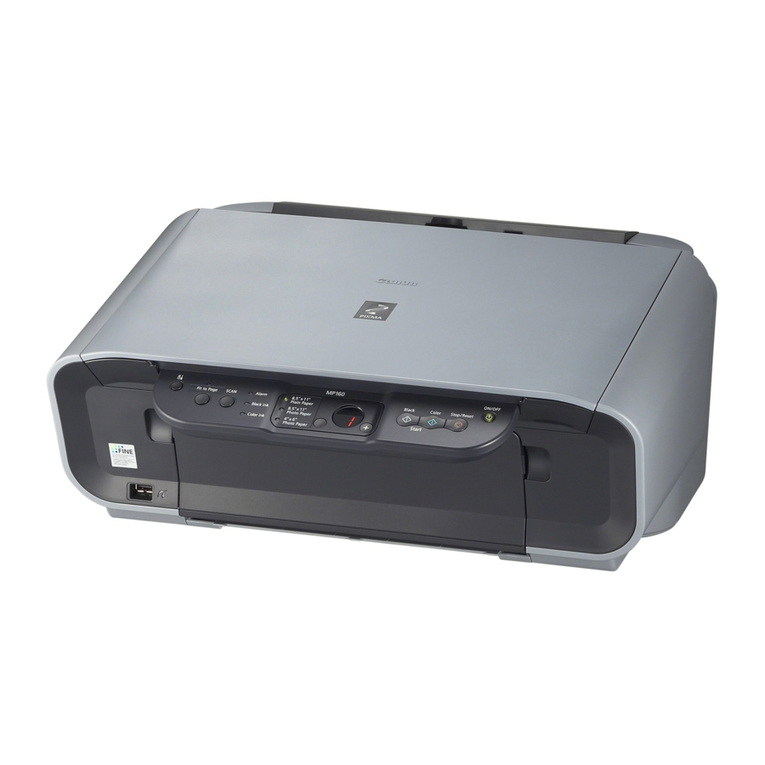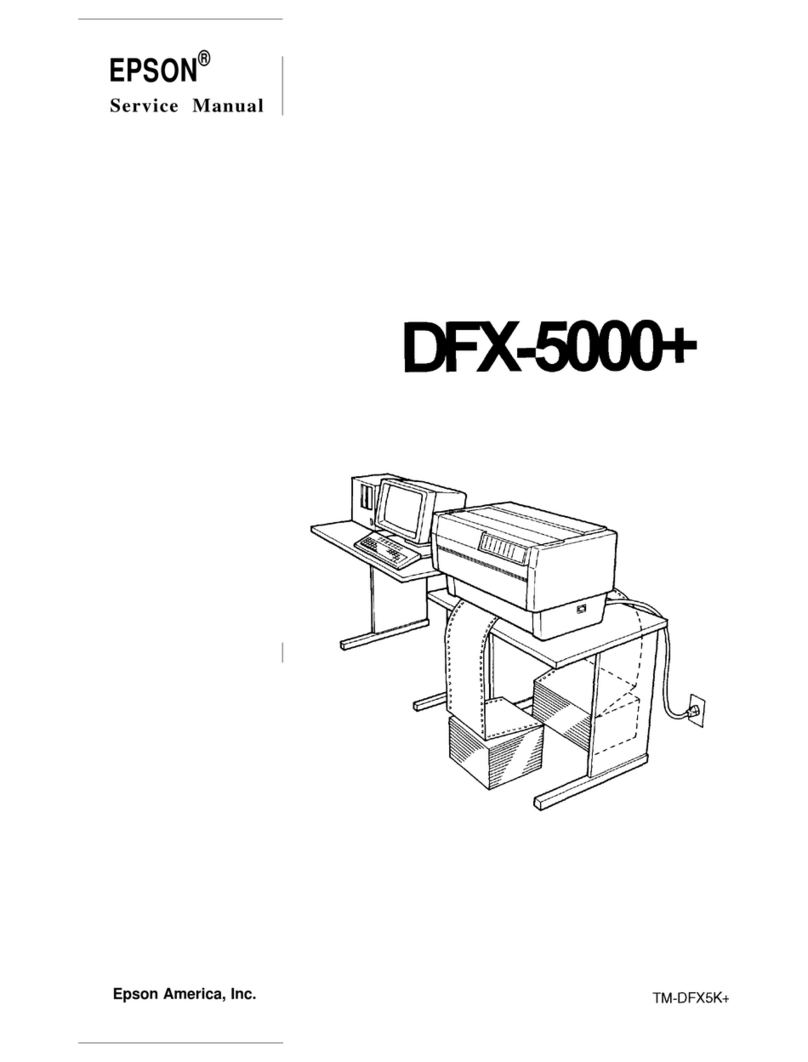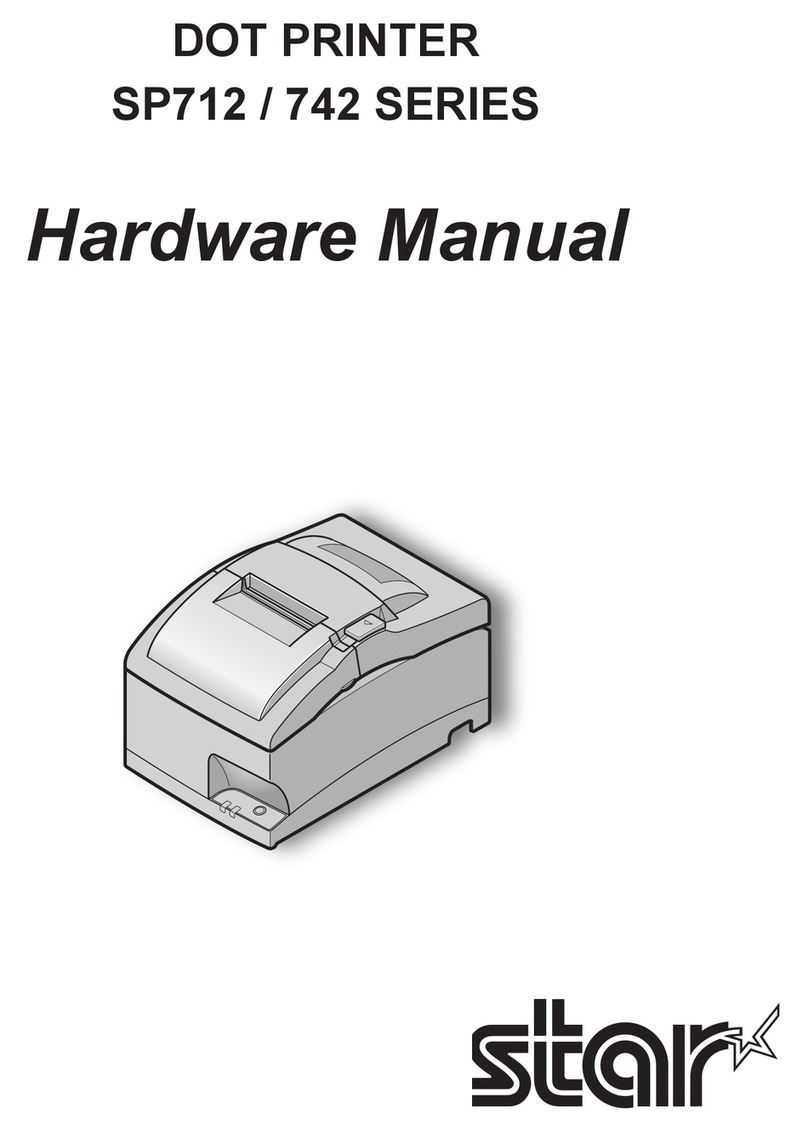DEC DEClaser 5100 User manual

DEClaser5100Printer
ServiceGuide
Order Number: EK–LNX09–SV. A01
Digital Equipment Corporation
Maynard, Massachusetts

First Printing, April 1994
Digital Equipment Corporation makes no representations that the use of its products in the
manner described in this publication will not infringe on existing or future patent rights, nor do
the descriptions contained in this publication imply the granting of licenses to make, use, or sell
equipment or software in accordance with the description.
© Digital Equipment Corporation 1994/Digital Equipment Corporation.
Printed in USA
The following are trademarks of Digital Equipment Corporation: DECdirect, DEClaser,
PrintServer, ReGIS, VAX DOCUMENT, and the DIGITAL logo are trademarks of Digital
Equipment Corporation.
ITC Souvenir is a registered trademark of International Typeface Corporation.
PCL and LaserJet are registered trademarks of the Hewlett-Packard Company.
Microsoft is a registered trademark of Microsoft Corporation
WordPerfect is a registered trademark of WordPerfect Corporation
PostScript is a registered trademark of Adobe Systems, Inc.
Tektronix is a registered trademark of Tektronix, Inc.
All other trademarks and registered trademarks are the property of their respective holders.
The postpaid Reader’s Comments forms at the end of this document request your critical
evaluation to assist in preparing future documentation.
S2312
This document was prepared using VAX DOCUMENT Version 2.1.

Contents
Preface ..................................................... xi
1 Physical and Functional Description
1.1 Product and Servicing Safety Notes ....................... 1–1
1.2 Physical Description................................... 1–2
1.3 Cassettes ........................................... 1–12
1.4 Optional Feeders . . ................................... 1–14
1.5 Memory Options . . ................................... 1–18
1.5.1 Optional Hard Disk ................................ 1–18
1.5.2 Expansion Memory ................................ 1–18
1.6 Ethernet Network Board ............................... 1–19
1.7 Font (PCMCIA) Cartridges . . ........................... 1–20
1.8 Resolution/Graphics Enhancements Option Board . . .......... 1–21
2 Technical Description
2.1 Print Engine Control .................................. 2–2
2.1.1 Video Controller Board and SmartPage ................. 2–4
2.1.2 Print Engine Modes ................................ 2–6
2.1.3 Low-voltage Power Supply Assembly ................... 2–8
2.1.4 Fusing Heater Control . . . ........................... 2–9
2.1.5 Fusing Malfunction ................................ 2–10
2.1.6 Interlocks ........................................ 2–12
2.2 Paper Feeding System ................................. 2–12
2.2.1 Size Sensing Cassettes . . . ........................... 2–14
2.3 Xerographic Process ................................... 2–15
2.3.1 Primary Charging Process ........................... 2–16
2.3.2 Exposure Process .................................. 2–16
2.3.3 Development Process ............................... 2–17
2.3.4 Transfer Process................................... 2–17
2.3.5 Separation Process ................................. 2–18
2.3.6 Print Drum Cleaning Process......................... 2–18
iii

2.3.7 Fusing Process .................................... 2–18
2.4 Scanner ............................................ 2–20
2.5 HVPSA............................................. 2–22
2.5.1 EP-ED Cartridge . . ................................ 2–24
3 Operating the Control Panel
3.1 Control Panel Description .............................. 3–2
3.2 Control Panel Operation ............................... 3–4
3.2.1 Online and Paused Messages . ........................ 3–4
3.2.2 Key Menu Modes . . ................................ 3–6
4 Test Patterns and Miscellaneous Procedures
4.1 About the Test Page . . . ................................ 4–2
4.2 About the Menu Guide . ................................ 4–3
4.3 About the Demo Pages . ................................ 4–4
4.4 About the Print PS or PCL Menus Pages. . . ................ 4–5
4.5 About the PCL Fonts and PostScript Fonts Lists............. 4–6
4.6 About the PostScript Error Report ........................ 4–7
4.7 Engine Board Test Pattern.............................. 4–8
4.8 Locking and Unlocking the Set-Up Menu . . ................ 4–9
4.9 Adjusting the Leading Edge Registration. . . ................ 4–10
4.10 Reading the Page Count ............................... 4–11
4.11 Formatting the Optional Disk . . . ........................ 4–12
5 Start FIP and Total Call Concept
5.1 Preliminary Information ............................... 5–2
5.2 Start FIP . . . ........................................ 5–2
5.3 Total Call Concept (TCC) Procedure....................... 5–5
5.3.1 200K Maintenance Procedure ........................ 5–7
6 Power and Control Panel FIPs
6.1 Bad Power or Control Panel FIPs ........................ 6–2
6.2 Optional Equipment Non-Error FIPs ...................... 6–5
6.3 Insert or Remove Cartridge ............................ 6–7
6.4 Load Env (Value)..................................... 6–8
6.5 Load Front or Manual Feed ............................. 6–9
6.6 Load LCIT (Value).................................... 6–10
6.7 Load or Install Inter (Value) ............................ 6–11
6.8 Memory Overflow or Print Overrun ....................... 6–12
iv

6.9 No Toner Cart or Toner Low . ........................... 6–13
6.10 Printer Open ........................................ 6–14
6.11 All Hard Disk Errors .................................. 6–15
6.12 50 ERROR .......................................... 6–16
6.13 51 or 52 ERROR . . ................................... 6–17
6.14 57 ERROR ......................................... 6–18
6.15 58 ERROR ......................................... 6–19
6.16 68 Service .......................................... 6–20
6.17 Print Engine Wiring Diagrams .......................... 6–20
6.17.1 Envelope Feeder and LCIT Wiring diagrams . . . .......... 6–25
7 FIPs for Fixing Paper Jams
7.1 Types of Jams ....................................... 7–2
7.2 Identifying the Location of the Jam ....................... 7–2
7.3 Paper Feed Area Jams ................................ 7–4
7.4 Fusing and Delivery Area Jams .......................... 7–6
7.5 Phantom Jams ....................................... 7–6
8 FIPs For Fixing Image Defects
8.1 Image Defects Lookup ................................. 8–2
8.2 Light or Faint Images ................................. 8–3
8.3 Blank or White Prints ................................. 8–4
8.4 Black or Too Dark Prints ............................... 8–5
8.5 In-line Vertical Dots ................................... 8–5
8.6 Dirt on Back of Page .................................. 8–6
8.7 Vertical Black Lines ................................... 8–7
8.8 Black Smudged Vertical Bands .......................... 8–7
8.9 Black Smudged Horizontal Bands ........................ 8–7
8.10 Blank or White Spots ................................. 8–8
8.11 Vertical White Lines .................................. 8–8
8.12 Registration ......................................... 8–9
8.13 Fusing Failure ....................................... 8–10
8.14 Distorted Image or Missing BD Signal. . ................... 8–11
8.15 Repetitive Marks . ................................... 8–12
v

9 Removing and Replacing FRUs
9.1 Removing and Replacing FRUs . . ........................ 9–1
9.2 Assembly, Control panel ............................... 9–2
9.3 Assembly, Gear ...................................... 9–5
9.4 Assembly, High-Voltage Power Supply (HVPSA) ............. 9–7
9.5 Assembly, Low-Voltage Power Supply (LVPSA) .............. 9–8
9.6 Assembly, Optional Hard Disk Drive ..................... 9–11
9.7 Assembly, Paper Delivery .............................. 9–15
9.8 Assembly, Feed ...................................... 9–18
9.9 Assembly, Scanner . . . ................................ 9–21
9.10 Board, LCIT Controller ................................ 9–23
9.11 Board, Feed Controller ................................ 9–27
9.12 Board, DC Control . . . ................................ 9–29
9.12.1 Page Count Memory (NVRAM) ....................... 9–32
9.13 Board, Ethernet ..................................... 9–33
9.14 Board, SIMMs ....................................... 9–35
9.15 Board, Video Controller ................................ 9–37
9.16 Cage, Card . . ........................................ 9–39
9.17 Cartridge, EP-ED (toner) .............................. 9–40
9.18 Cover, Left-Side ...................................... 9–41
9.19 Cover, Right-Side ..................................... 9–43
9.20 Cover, Top Cover ..................................... 9–45
9.21 Door, Rear . . ........................................ 9–47
9.21.1 Rear Door Latch. . . ................................ 9–49
9.22 Door, Front and Guide Plate ............................ 9–50
9.22.1 Guide Plate ...................................... 9–52
9.23 Fan Exhaust ........................................ 9–54
9.24 Feeder, Envelope ..................................... 9–57
9.25 Fusing Unit ........................................ 9–59
9.26 Guide, HVPSA Contact Plate ............................ 9–60
9.27 Interconnect, HVPSA/Fuser ............................. 9–70
9.28 Motor, Main ........................................ 9–74
9.29 Motor, LCIT Pickup . . ................................ 9–75
9.30 Pad, Front Tray Separation ............................ 9–78
9.31 Roller Transfer ...................................... 9–79
9.32 Roller, Cassette Pickup ................................ 9–80
9.33 Roller, Front Tray Pickup .............................. 9–81
9.34 Roller, LCIT Pickup . . . ................................ 9–83
9.35 Sensor, Fusing Exit/Rear Door . . . ........................ 9–84
vi

10 FRU Part Numbers
10.1 Field Replaceable Units ................................ 10–1
A Key Menu Map, Features, and Values
A.1 Key Menu Map . . . ................................... A–1
A.2 Key Menu Messages................................... A–8
B General Information
B.1 Connecting to an Ethernet Network . . . ................... B–1
B.2 Connecting PC or IBM Compatible Systems ................ B–2
B.2.1 Configuring AUTOEXEC Files ........................ B–3
B.2.2 MS–DOS Drivers .................................. B–4
B.2.3 Windows and Windows NT Drivers . ................... B–4
B.3 Connecting the Printer to a Macintosh Computer . . .......... B–5
B.3.1 Macintosh Printer Driver . ........................... B–6
B.4 Connecting to OpenVMS VAX or ULTRIX Systems . .......... B–7
C DEClaser 5100 Specifications
C.1 Operating Requirements ............................... C–4
C.1.1 Space Requirements ................................ C–4
C.1.2 Environmental Requirements ........................ C–6
D Training, Documentation and Tools
D.1 Training . ........................................... D–1
D.2 Documentation Ordering Information . . ................... D–2
D.3 Tools . . . ........................................... D–3
Index
Figures
1–1 Front View ....................................... 1–2
1–2 Front Tray Open .................................. 1–4
1–3 Inside the Top Door ................................ 1–6
1–4 Rear Panel ....................................... 1–8
1–5 LCIT Interconnection ............................... 1–10
vii

1–6 Universal Cassette ................................ 1–12
1–7 LCIT . . . ........................................ 1–14
1–8 Envelope Feeder. . . ................................ 1–16
1–9 Ethernet Network Board ............................ 1–19
1–10 Font Cartridge Installation . . ........................ 1–20
2–1 Overall Block Diagram.............................. 2–3
2–2 Video Controller Block Diagram....................... 2–5
2–3 Print Engine Modes Timing Diagram . . ................ 2–7
2–4 LVPSA Diagram . . . ................................ 2–8
2–5 Fusing Temperature Chart. . . ........................ 2–9
2–6 Discharging C202 . . ................................ 2–10
2–7 Fusing Control Circuits ............................. 2–11
2–8 Interlock Diagram . ................................ 2–12
2–9 Xerographic Process ............................... 2–15
2–10 Scanning System Diagram . . . ........................ 2–21
2–11 HVPSA Control Circuit ............................. 2–23
2–12 EP-ED Cartridge . . ................................ 2–25
3–1 Control Panel ..................................... 3–2
3–2 Overall Key Menu Map ............................. 3–7
4–1 Test (Power Up) Page ............................... 4–2
4–2 Menu Guide ...................................... 4–3
4–3 Demo Page ....................................... 4–4
4–4 PostScript and PCL Settings Pages .................... 4–5
4–5 Font Lists........................................ 4–6
4–6 PostScript Error Report ............................. 4–7
4–7 Engine Board Test Pattern. . . ........................ 4–8
4–8 VR202 Registration Adjustment....................... 4–11
6–1 LVPSA Diagram . . . ................................ 6–4
6–2 Print Engine Wiring Diagram 1 ....................... 6–21
6–3 Print Engine Wiring Diagram 2 ....................... 6–22
6–4 Print Engine Wiring Diagram 3 ....................... 6–23
6–5 Print Engine Wiring Diagram 4 ....................... 6–24
6–6 Optional Envelope Feeder Wiring Diagram .............. 6–25
6–7 LCIT Wiring Diagram .............................. 6–26
7–1 Jam Areas ....................................... 7–3
8–1 Image Defects Directory ............................. 8–2
8–2 Roller Defect Ruler. ................................ 8–12
viii

A–1 Key Menu Map ................................... A–2
B–1 AppleTalk Network Connections . . . ................... B–5
B–2 EIA-232 and EIA-422 Cable/Adapter Configurations ....... B–8
C–1 Operating Space ................................... C–5
Tables
1–1 Front View ....................................... 1–3
1–2 Front Tray ....................................... 1–5
1–3 Inside the Top Door ................................ 1–7
1–4 Rear View ....................................... 1–9
1–5 LCIT Interconnection ............................... 1–11
1–6 Fixed and Universal Cassettes ........................ 1–13
1–7 LCIT ........................................... 1–15
1–8 Envelope Feeder................................... 1–17
2–1 Size Sensing Switches . . . ........................... 2–14
3–1 Control Panel . . ................................... 3–2
3–2 Indicators and Keys ................................ 3–3
3–3 Online and Paused Messages ......................... 3–4
5–1 Start FIP ........................................ 5–3
5–2 200K Maintenance Procedure ........................ 5–7
7–1 Types of jams . . ................................... 7–2
7–2 Jam Areas ....................................... 7–3
7–3 Feed Area Swap Lists . . . ........................... 7–5
10–1 FRUs ........................................... 10–1
B–1 Parallel Port AUTOEXEC.BAT Modifications . . .......... B–3
B–2 Serial Port AUTOEXEC.BAT Modifications .............. B–3
C–1 Printer Specifications ............................... C–1
D–1 Training ......................................... D–1
D–2 Documentation . ................................... D–2
D–3 Tools. ........................................... D–3
ix


Preface
This book is for Digital Service engineers to help them repair and service the
DEClaser 5100 printer. Before using this book, you must attend the specific
Digital Service training course and all other prerequisite training courses.
Section D.1 lists all recommended courses.
Conventions
The following conventions are used in this guide:
Convention Description
Note: Notes provide additional information.
Caution: Cautions contain information to prevent damage to the
equipment or software.
Warning: Warnings contain information to prevent personal injury.
On Line All control panel keys are represented by a box with the name of
the key inside the box.
Value When this symbol appears next to a control panel message,
it shows that a string of numbers normally accompanies the
message. For example, in the Parity=Value message, the value
can be one of five different words.
PRNT
A line over a signal name indicates that when the signal is
asserted, the signal is low.
How to Use this Guide
You can use this guide as a combined training document and for reference
information.
Use the table of contents or the fault isolation procedures (FIP)s to find the
section number of the information you need. The section header numbers (1.3,
2.3 and so on) are printed at the top of each page.
xi

• Chapter 1 identifies the significant external and internal components of the
standard printer and of the optional equipment.
• Chapter 2 describes the paper handling, electromechanical operation, and
the xerographic processes.
• Chapter 3 describes the control panel operation.
• Chapter 4 describes the test prints and several miscellaneous procedures.
• Chapter 5 contains the start FIP and the total call concept (TCC)
procedure.
• Chapter 6 contains FIPs for fixing power, control panel, and error message
malfunctions.
• Chapter 7 contains the paper jam FIPs.
• Chapter 8 contains the image defect FIPs.
• Chapter 9 contains procedures for removing and replacing field replaceable
units (FRU)s.
• Chapter 10 contains the FRU part numbers.
• Appendix A contains a map of the control panel key menus and a
glossary-style description of each feature and value.
• Appendix B contains information on how to connect and configure the
DEClaser 5100 printer.
• Appendix C contains the printer specifications.
• Appendix D contains information about tools, training, and documentation.
xii

DSG-000172
Notes:
1


1
Physical and Functional Description
This chapter provides a physical and functional description of the DEClaser
5100 printer and of the optional printer equipment.
1.1 Product and Servicing Safety Notes
Note: The DEClaser 5100 printer complies with all United States government
safety regulations applicable to ozone gas emissions and laser beam light
exposure.
Laser Safety: The DEClaser 5100 printer complies with 21 CFR Chapter 1,
Subchapter J, as a Class 1 laser product under the U.S. Department of Health
and Human Services (DHHS) Radiation Performance Standard, according to
the Radiation Control for Health and Safety Act of 1968. The DEClaser 5100
printer does not emit hazardous light because the laser beam is totally enclosed
during all modes of customer operation and maintenance.
Warning: Use of controls or adjustment procedures other than those specified
in this manual could result in hazardous laser light exposure.
Physical and Functional Description 1–1

1.2 Physical Description
1.2 Physical Description
Figure 1–1 presents a view of the front and right side of the printer. The
names and functions of the items are described in Table 1–1.
Figure 1–1 Front View
DSG-000425
6
13
7
8
4
5
2
1–2 Physical and Functional Description

1.2 Physical Description
Table 1–1 Front View
!
Top door
and cover Lifts for access to the EP-ED cartridge or for clearing
paper jams. When closed, a plastic post pushes down the
linkage to the interlock switch. The switch connects the
+24VB power to the main motor and paper feed motor.
See Section 2.1.3 for additional information.
"
Face down tray
delivery stack Holds up to 250 sheets. This printer has no tray full or
job offset features.
#
Hot air exhaust The main fan blows the hot air from inside the printer
through this vent. Overheating might result if the vent
is blocked.
$
Power on/off switch Connects to the main LVPSA switch by a mechanical
linkage.
%
Font cartridge slot Holds up to two optional PCMCIA font cartridges. The
cartridges can be hot swapped (with power applied) but
the printer must be paused.
&
Control panel Consists of seven multipurpose keys, an alphanumeric
display panel, and indicators that light or flash to
show status conditions. See Chapter 3 for additional
information.
'
Internal paper cassette Holds up to 250 sheets of xerographic paper. Internal
cassettes are available in fixed or universal sizes. The
universal cassette can be configured to accommodate the
standard sized sheets listed in Table 2–1.
(
Cassette full/empty
indicator The mechanical indicator links to and moves with the
paper stack lifter inside the cassette.
Physical and Functional Description 1–3

1.2 Physical Description
Figure 1–2 shows the components that are accessible through the front tray of
the printer. Table 1–2 describes the components.
Figure 1–2 Front Tray Open
DSG-000863
12
3
4
1–4 Physical and Functional Description

1.2 Physical Description
Table 1–2 Front Tray
!
Envelope feeder
connector Connects the optional envelope feeder to the feed unit
controller. It is hidden by a panel when no envelope
feeder is installed. See Section 9.24 for envelope feeder
and panel installation.
"
Test print switch Use a suitable tool to press this switch. When pressed,
the DC control board feeds and prints one copy of the
engine board test pattern from the internal cassette only.
See Section 4.7 for additional information.
#
Adjustable paper
guides The adjustable guide is moved to hold the media against
the fixed guide. Image skewing, paper jams, or bad
image positioning can occur if the adjustable guide is too
loose or over-tightened.
$
Front tray
and door Shown in the open position. The tray accommodates
standard size cut sheets and envelopes. The tray is
monitored by the paper end and front tray paper sensor.
Physical and Functional Description 1–5

1.2 Physical Description
Figure 1–3 shows the inside components that are accessible through the top
door of the printer. Table 1–3 describes each component.
Figure 1–3 Inside the Top Door
DSG-000861
134
2
5
1–6 Physical and Functional Description
Other manuals for DEClaser 5100
2
Table of contents
Other DEC Printer manuals
Popular Printer manuals by other brands

Canon
Canon iP5000 - PIXMA Color Inkjet Printer quick start guide
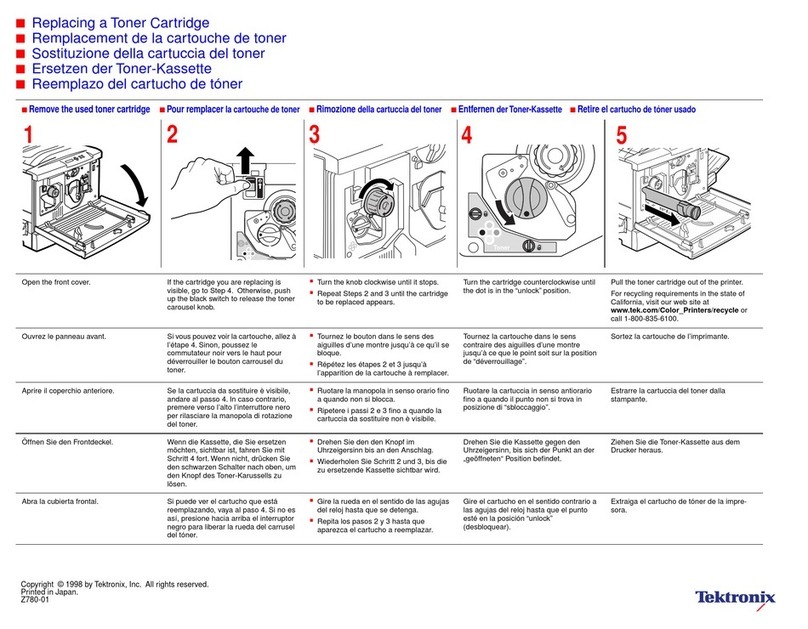
Tektronix
Tektronix Phaser 780 Color supplementary guide

Epson
Epson B-510DN - Business Color Ink Jet Printer Specifications

Philips
Philips CRYSTAL 660 - NETWORK Installation guidelines
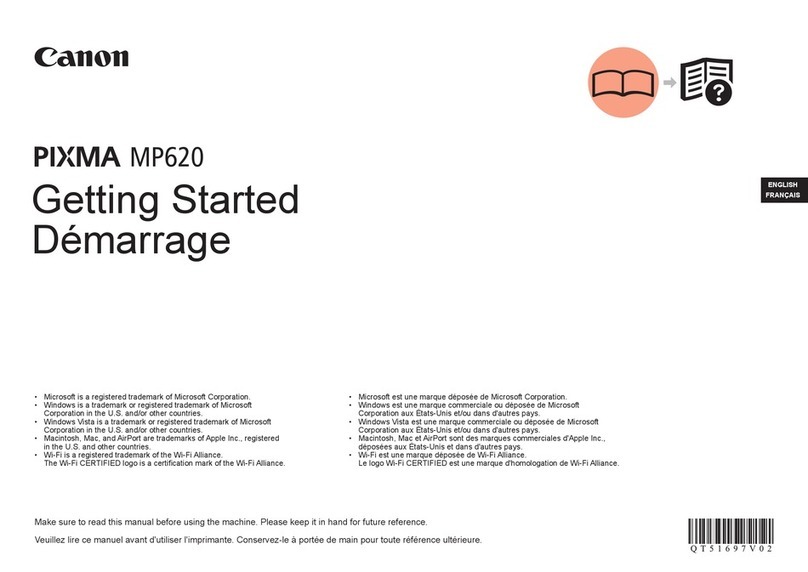
Canon
Canon PIXMA MP620 series Getting started
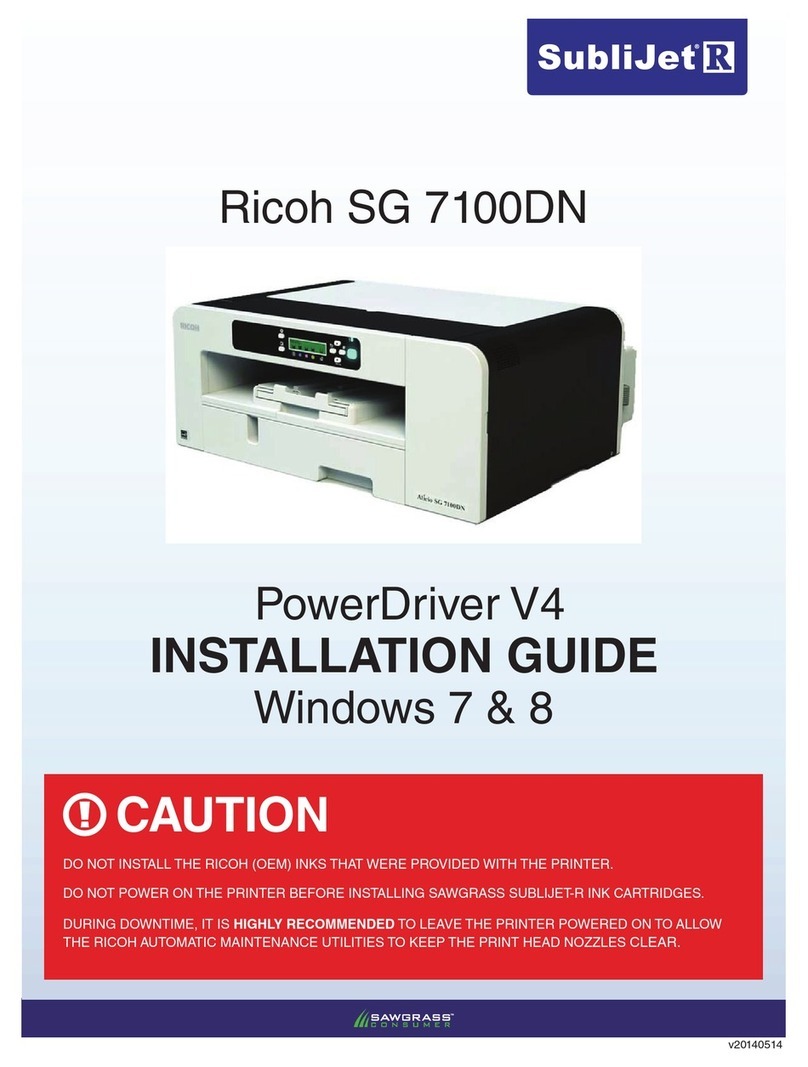
Ricoh
Ricoh SG 7100DN installation guide
